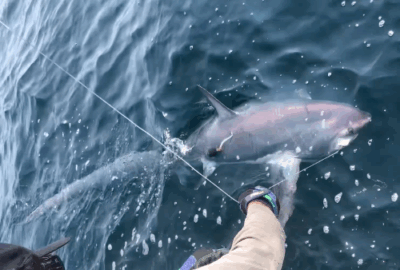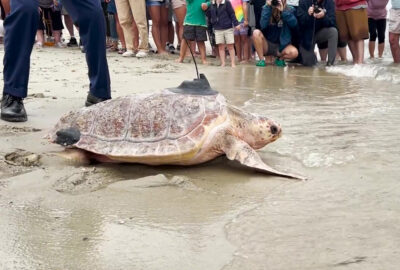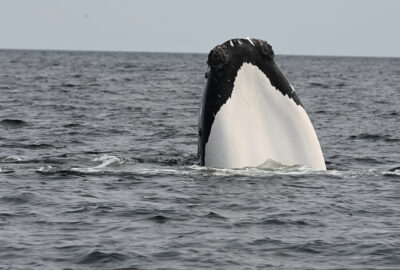A Whole Heap Of Humpbacks!
By New England Aquarium on Sunday, August 16, 2020

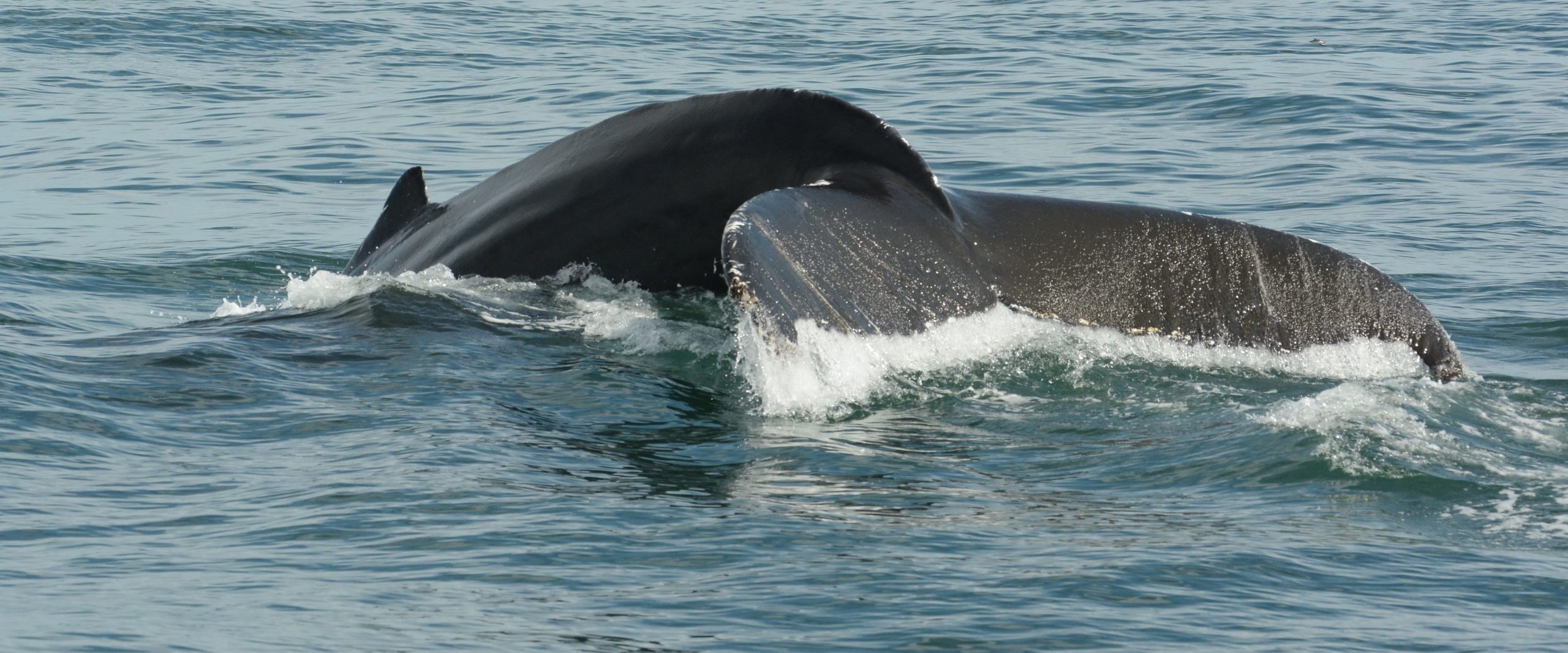
By
Our team headed back out into the Bay of Fundy on August 4. Our plan was to run tracklines on the outskirts of the area we surveyed on August 1, which covered the heart of the Grand Manan Basin (the feeding grounds that right whales have historically used). Tracklines (see below) enable us to survey large areas of ocean efficiently. The process entails mapping out a grid of sorts over a survey area to avoid counting animals twice on the same study. Utilizing and recording tracklines also ensures we don’t duplicate efforts on subsequent trips.
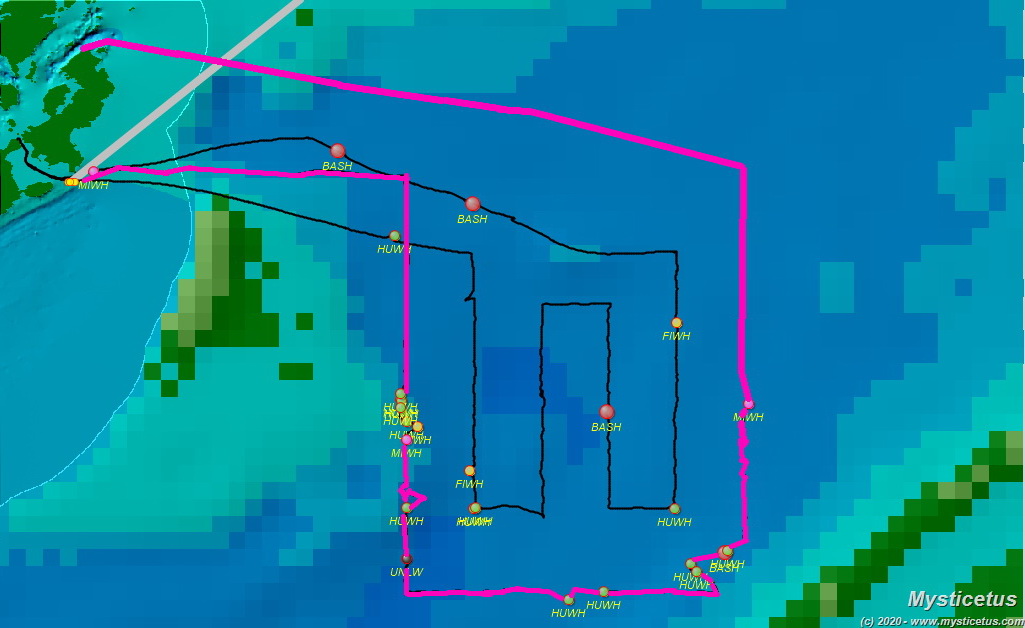
The seas were a little bumpy in the morning, particularly when we crossed over an area known as the “Bulkhead Rips”—where rapid changes in bathymetry create a sea state that differs from the surrounding waters particularly when the tide changes—but overall the conditions were favorable. At the southern portion of our survey, we found several finback and minke whales, and a whopping 14 humpback whales!
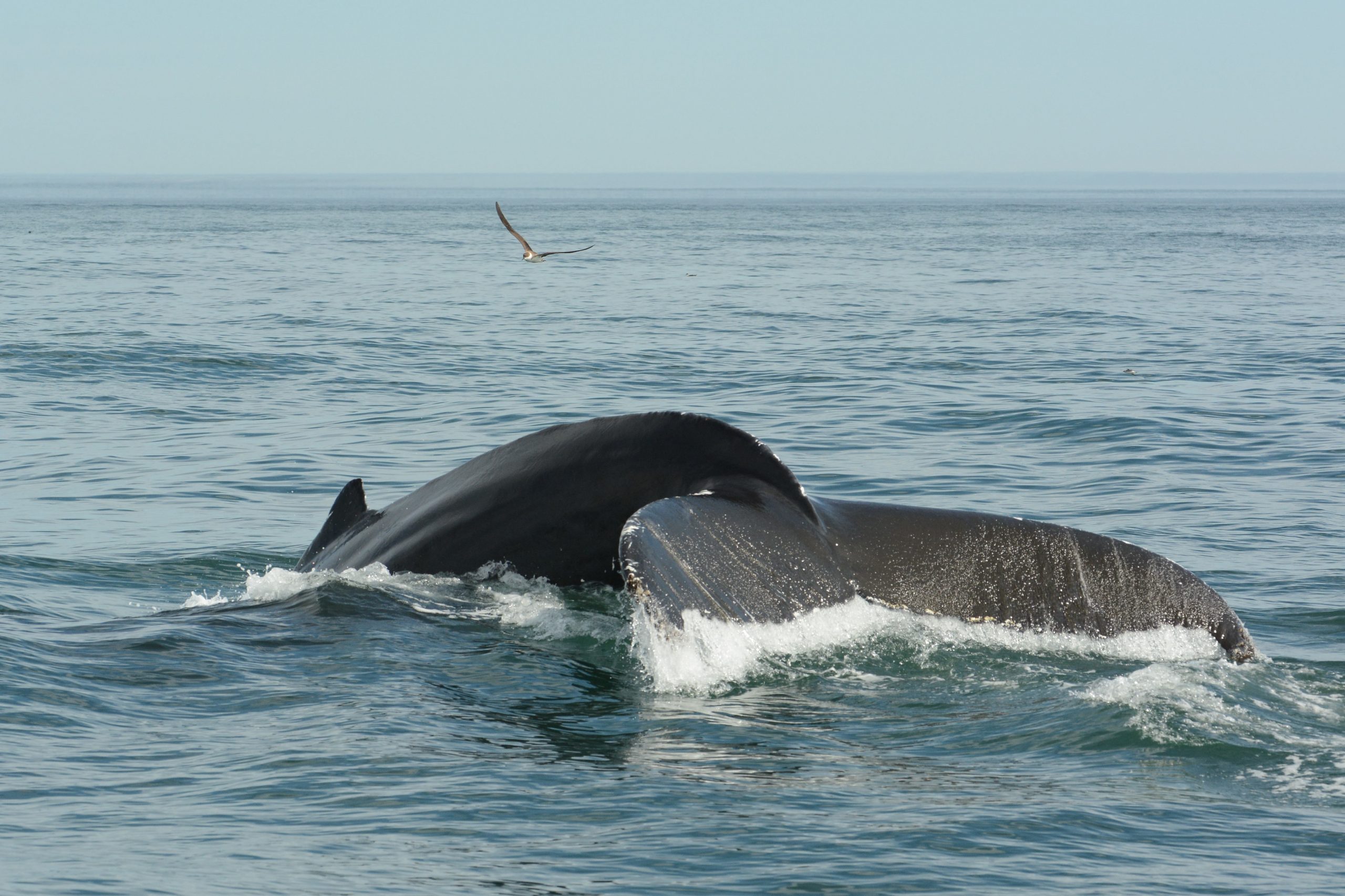
Most of these humpback whales are frequent visitors to the Bay of Fundy. While the biggest key to humpback identification is the underside of the fluke, which reveals a pigmentation pattern (or lack thereof), another unique identifying feature is scarring. One of the whales with scarring on the dorsal fin, known as “Baton,” was documented by our team in June 2019. As mentioned in our last blog, all of our photographed humpback sightings are contributed to the Gulf of Maine Humpback Catalog.
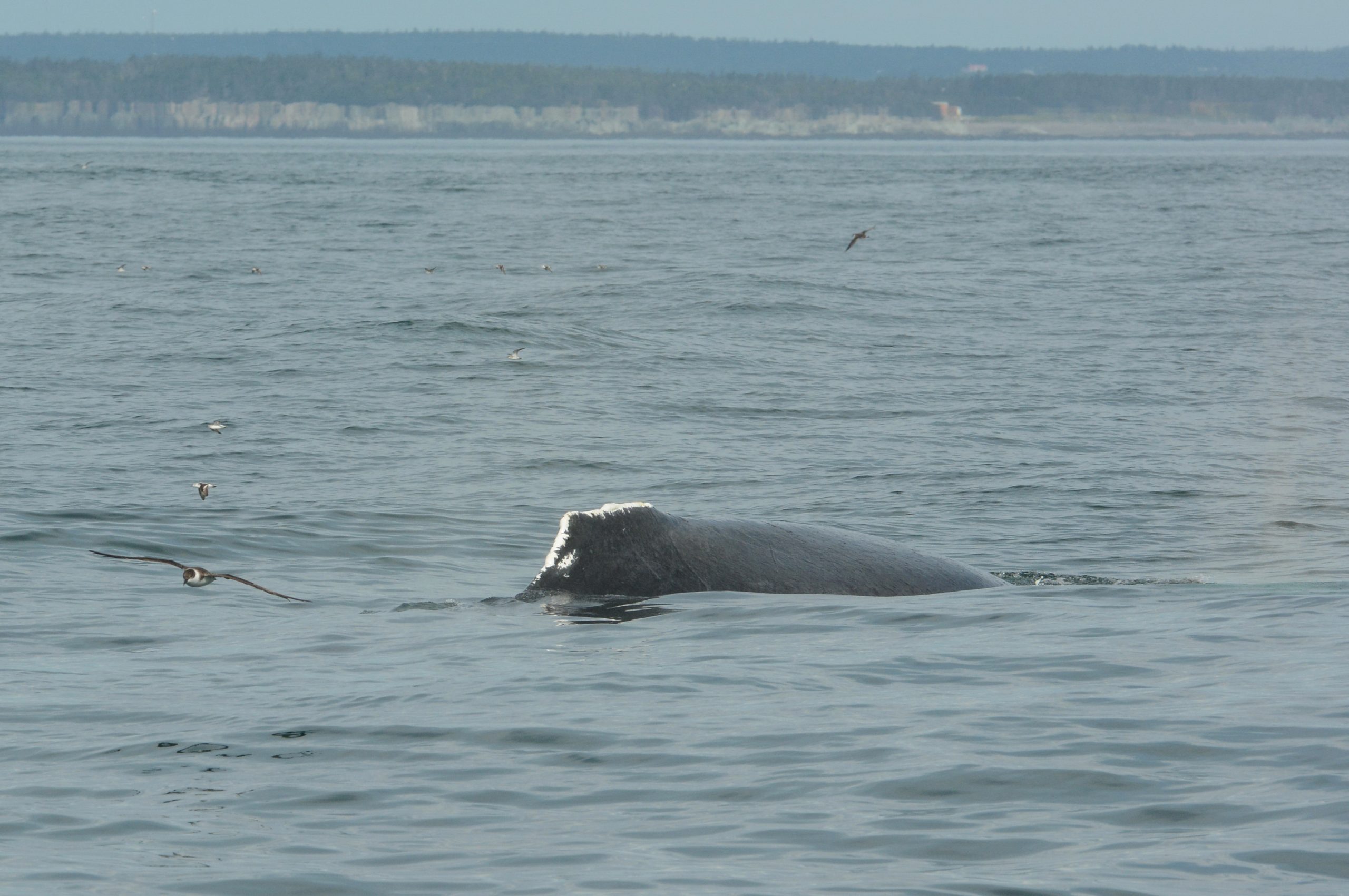
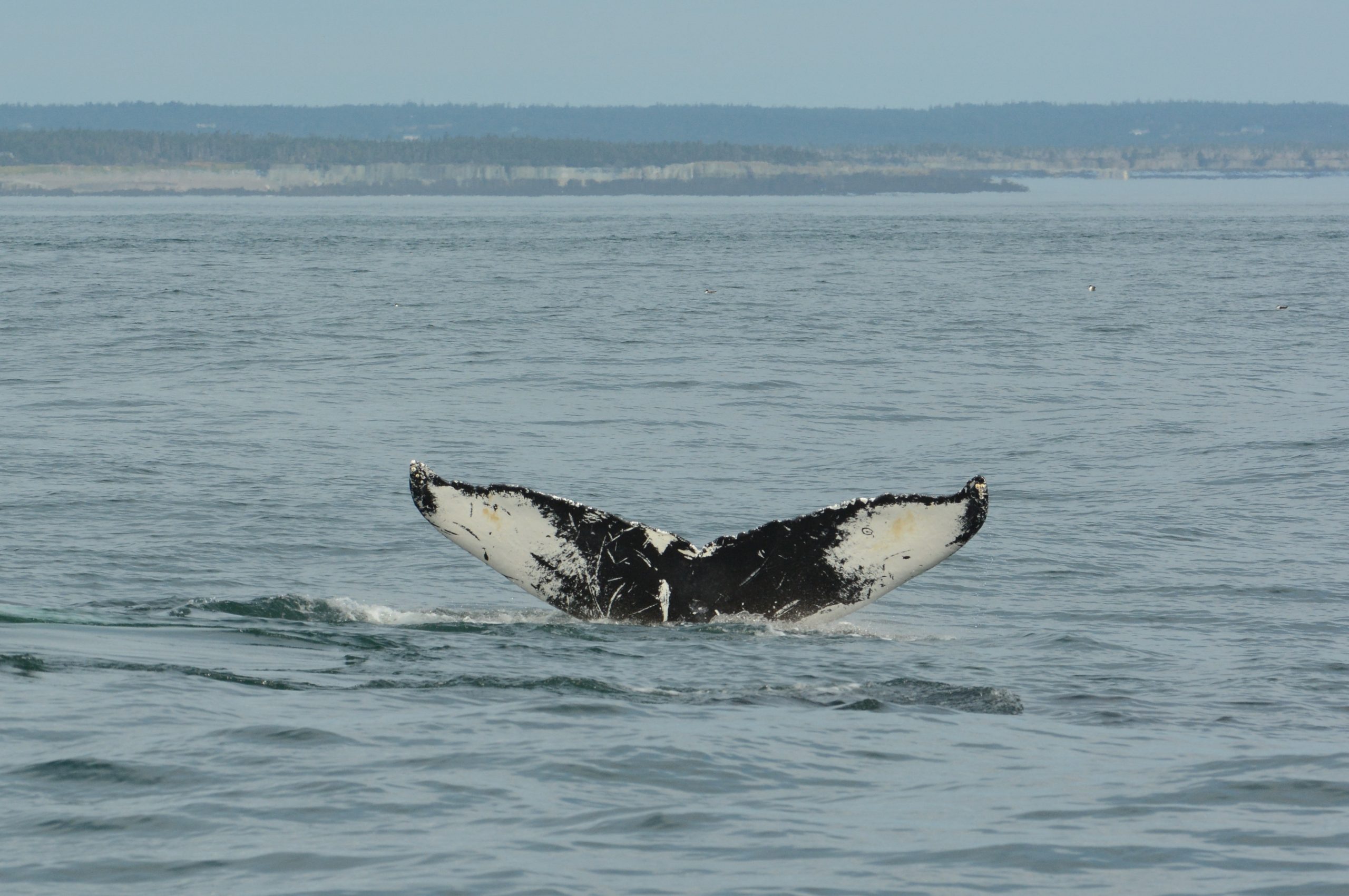
On August 8, our plans to further survey the Grand Manan Basin were foiled by a thick fog bank, which engulfed us and severely limited our visibility. As we discussed plan B and set a new course, we turned on our radar and utilized Automatic Identification System (AIS) to alert us to the presence of any nearby vessels. After making it out of the fog, we spotted humpback whales! Amy W. knew our first individual on sight as a whale named “Sedge,” who has a distinctive healed injury on the dorsal fin. One group of humpbacks included some of the individuals we encountered on August 4, and one of the whales was playing with some seaweed at the surface!
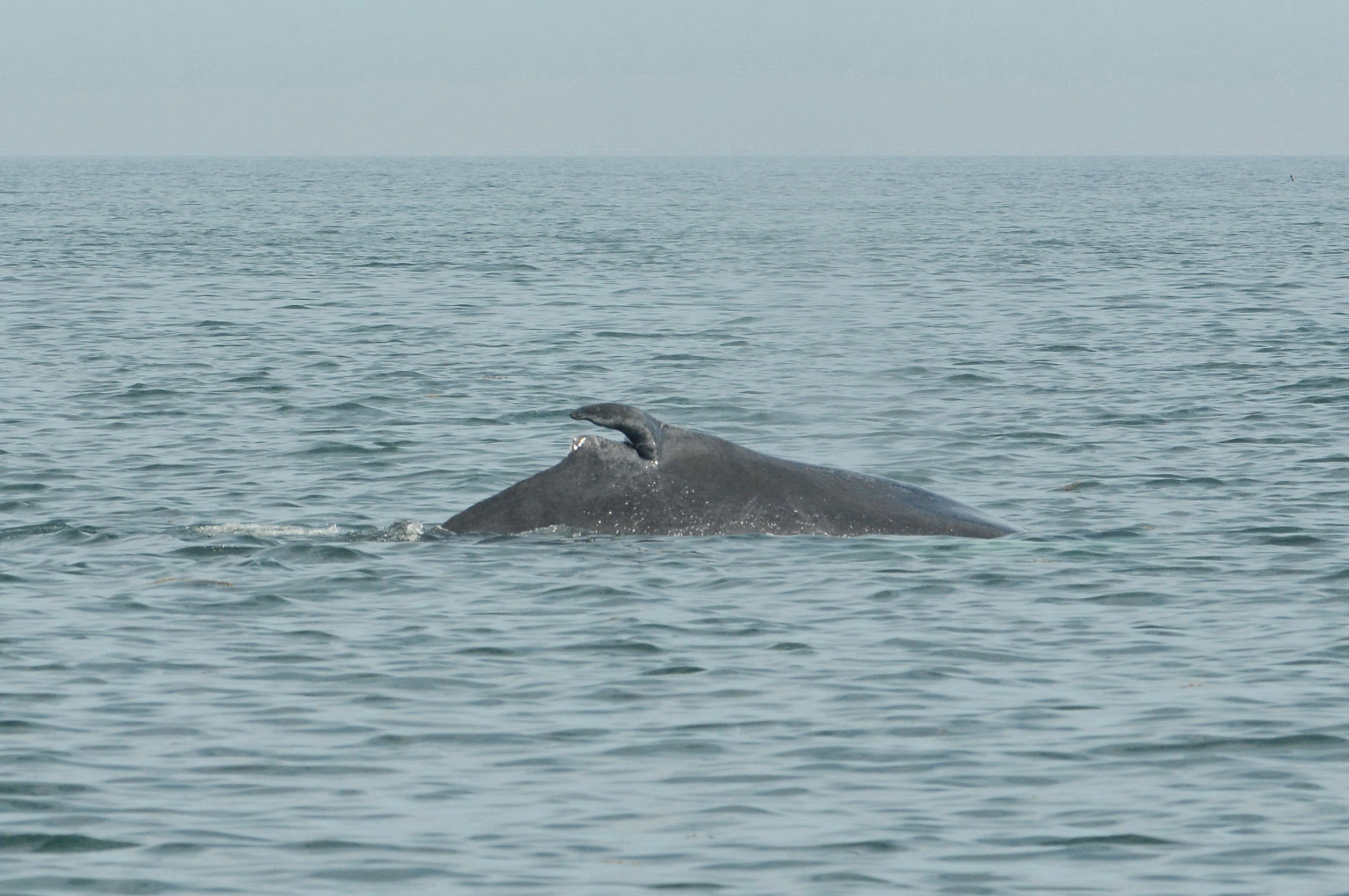
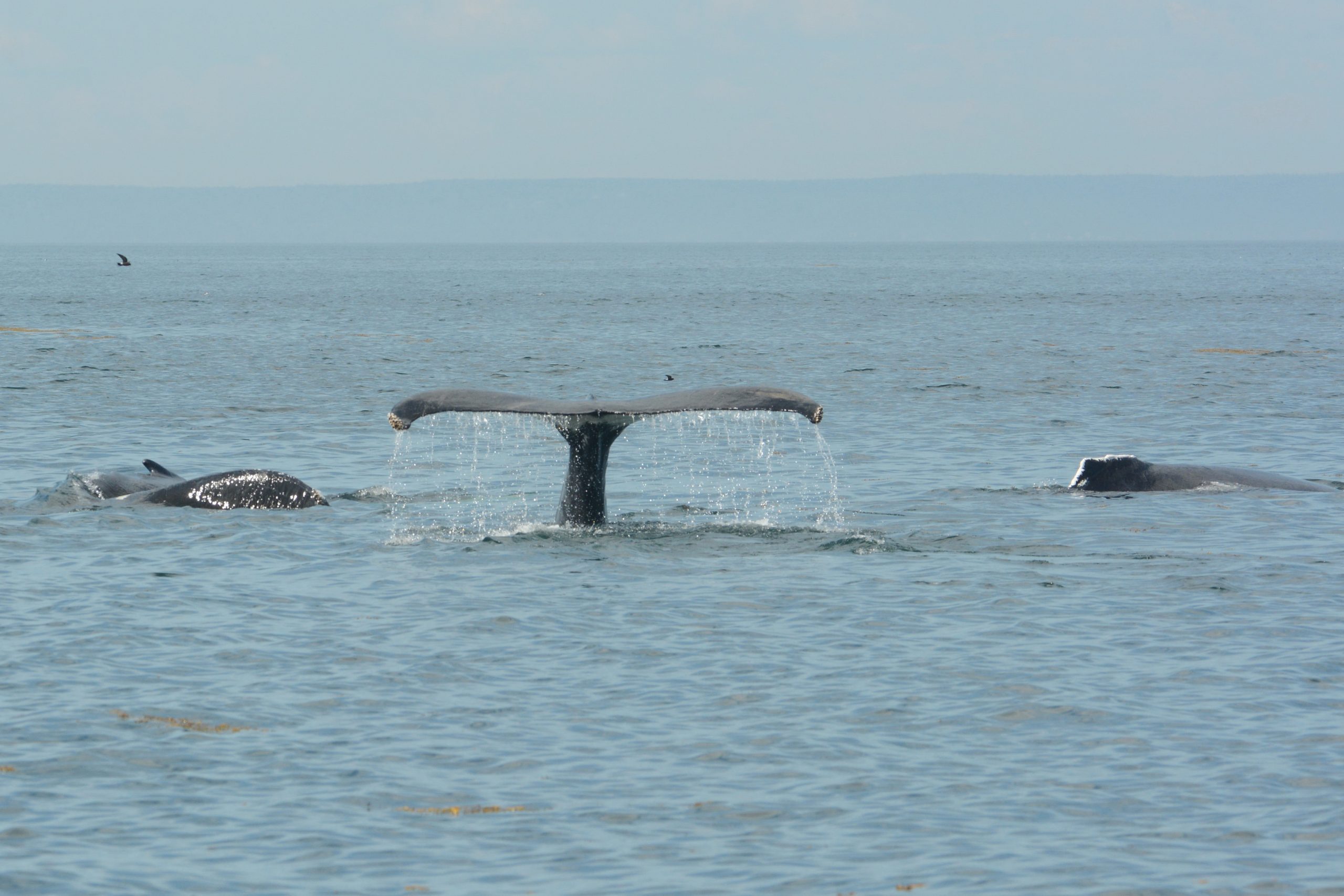
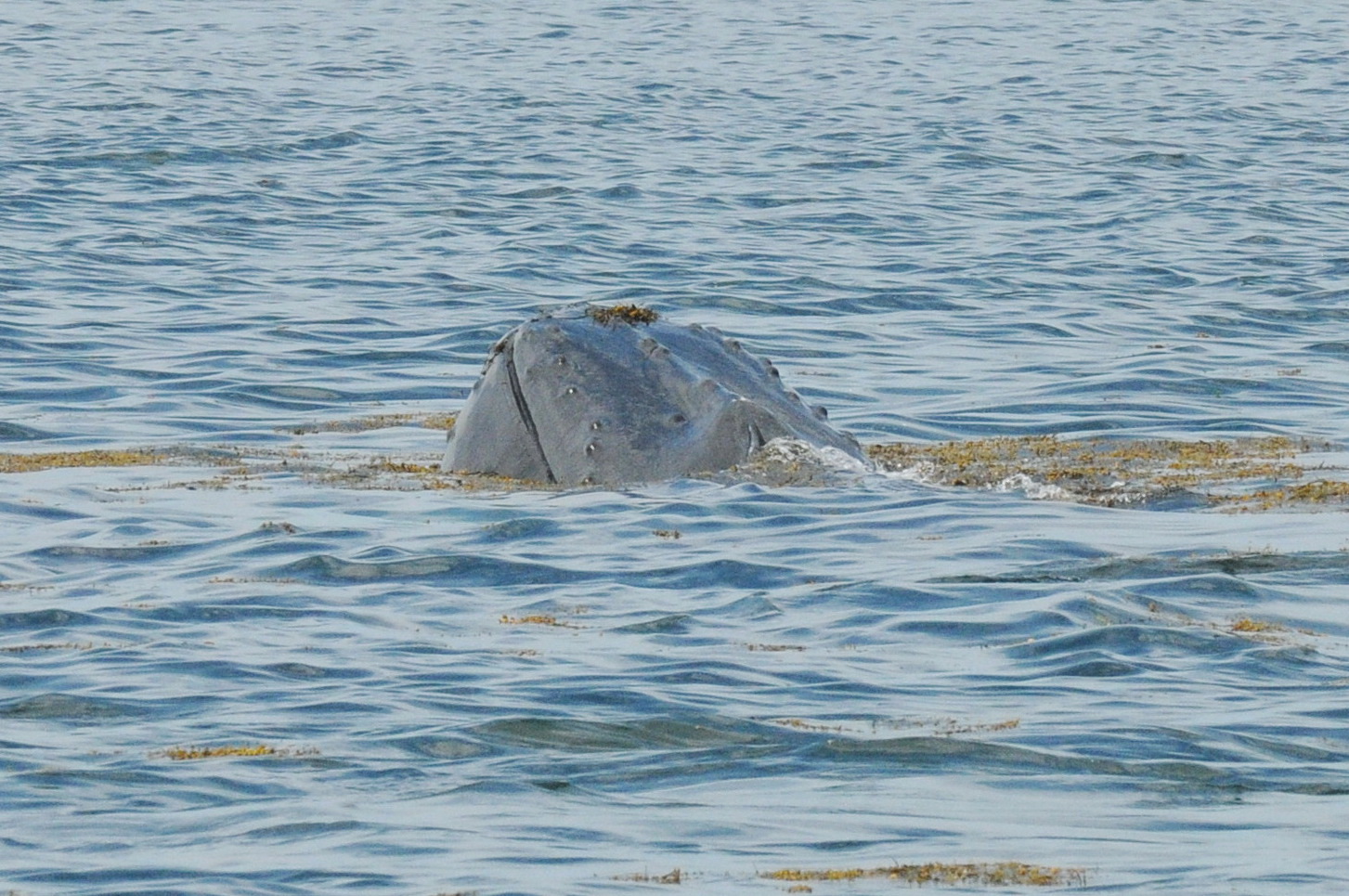
With the fog to the south, we made a long trek to the north and east of the Basin, but had few sightings for the rest of the day. Our afternoon listening station near the Wolves islands, south of Blacks Harbour N.B., only turned up some harbor porpoise and chatty Great Shearwater birds. While our efforts haven’t led to any right whale sightings yet, our spirits remain high and we’re excited to see what our next day out on the water holds!
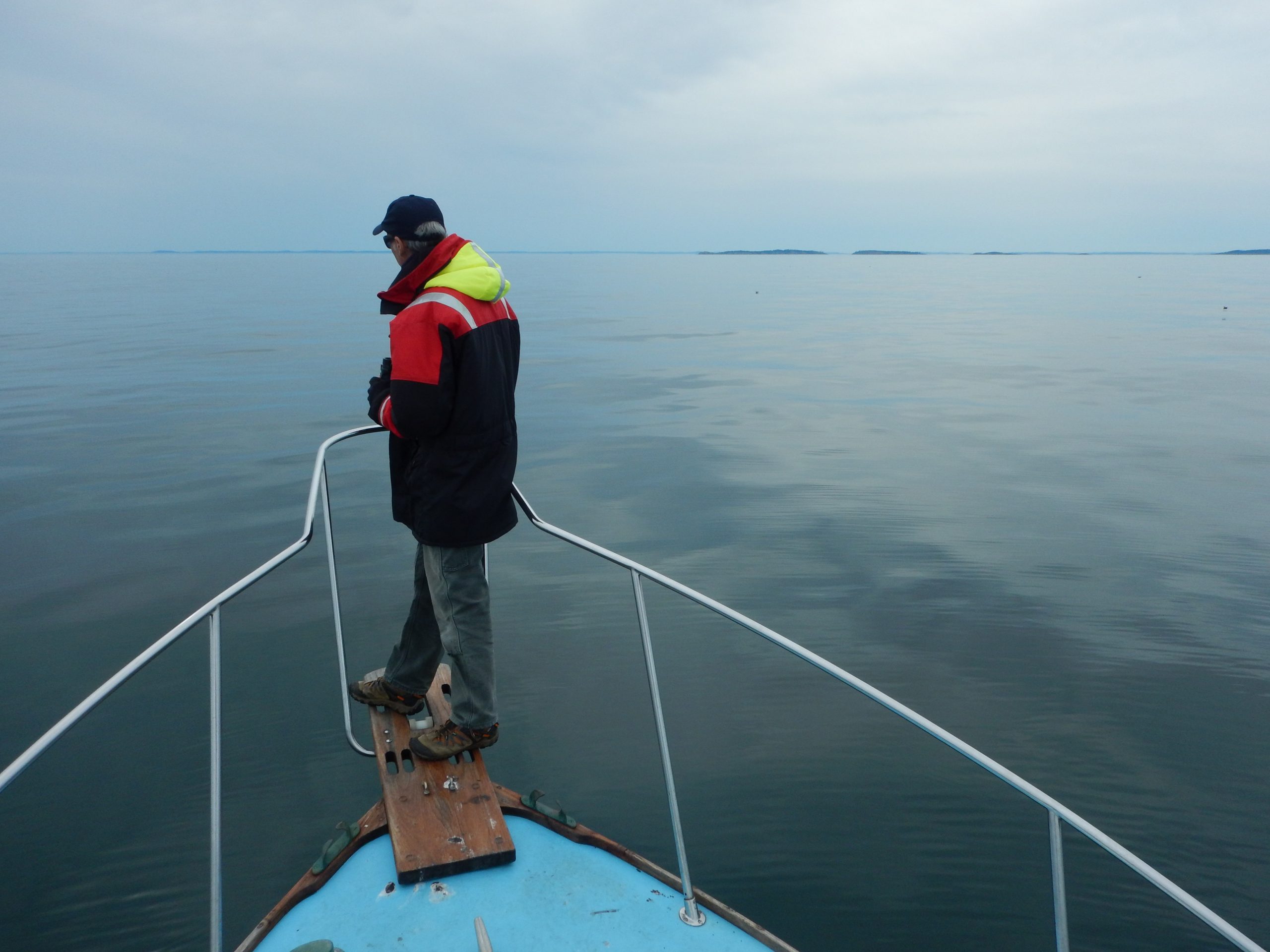
This work is made possible in part by the generosity of Irving Oil, lead sponsor of the New England Aquarium’s North Atlantic Right Whale Research Program.

